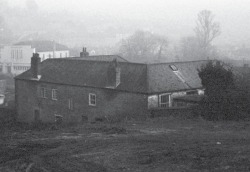At the beginning of the 19th century, people living in extreme poverty had to apply to their parish for poor relief. The homeless had no choice but to enter the workhouse where they would work long hours in return for board and lodging.
Men were given hard manual work such as stone breaking. Women did domestic work such as cleaning or helping in the kitchen or laundry. The workhouse was a cruel place and families would be split up with men, women and children forced to live separately. Children from the age of 13 were sent out to work in service.
There were three parish workhouses in Truro, but later on these were replaced by the larger Union Workhouse.
The workhouses were tough places, but sometimes life inside seemed better than on the outside - with food and somewhere to sleep!
"Such pudden full of figs and such ample supply of gravey as to make the lips of youngsters who peered thro’ the chinks of the door water..."
Even after the workhouses closed, living conditions remained hard for some into the Twentieth Century. Use the link below to hear Pat Palmer describes how her family was refused blankets when she was a child.


St Mary's workhouse on another gloomy day